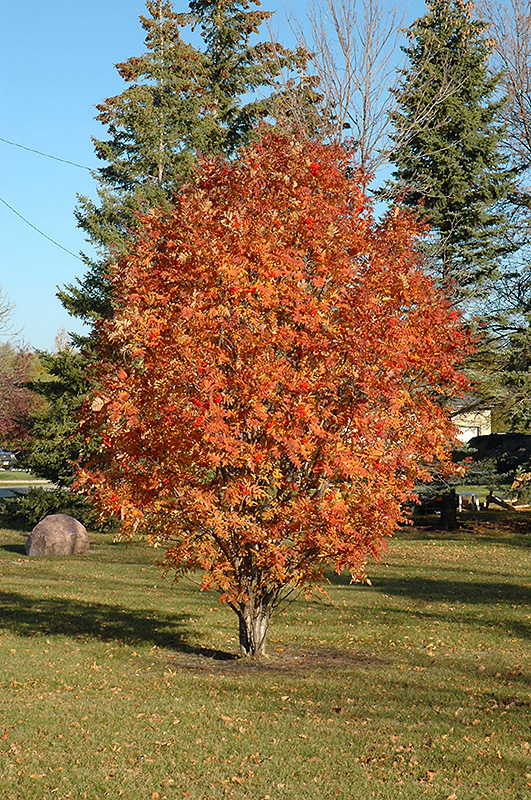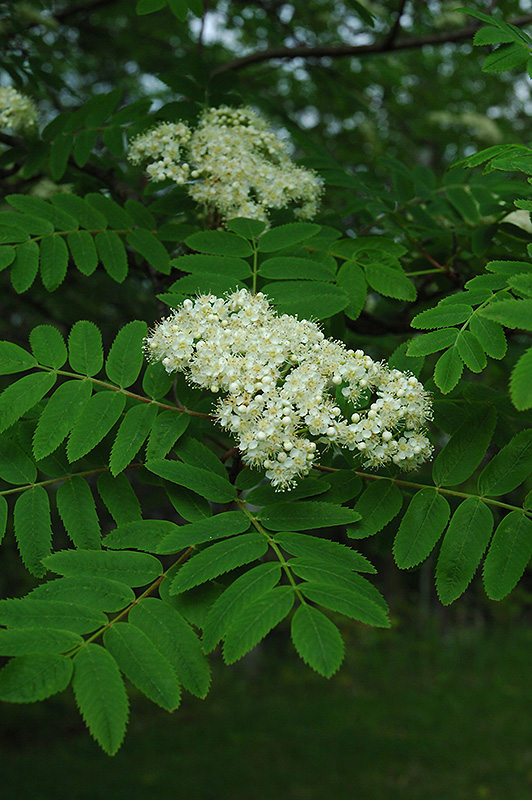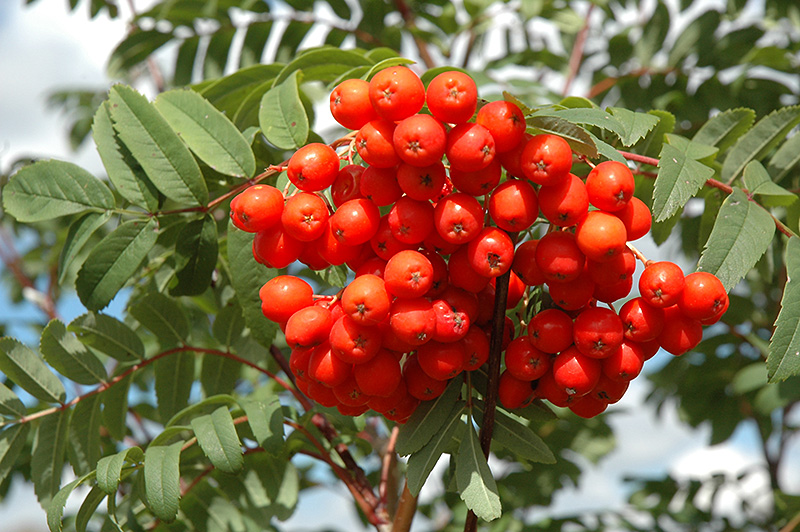Mountain Ash, Cardinal Royal Sorbus aucuparia 'Michred' Height: 35 feet Spread: 20 feet
Sunlight:
Hardiness Zone: 2b Other Names: Rowan, Rowan Tree Brand: J. Frank Schmidt & Son Co. Description: A narrowly oval accent tree with clusters of white flowers in spring followed by bright red berries that persist into winter; compound leaves with silver undersides turn flaming red in fall; ideal for small properties; needs well drained soil Ornamental Features Mountain Ash, Cardinal Royal features showy clusters of white flowers held atop the branches in mid spring. The red fruits are held in abundance in spectacular clusters from early fall to late winter. It has dark green deciduous foliage. The oval compound leaves turn an outstanding orange in the fall. The smooth olive green bark adds an interesting dimension to the landscape. Landscape Attributes Mountain Ash, Cardinal Royal is a deciduous tree with a shapely oval form. Its relatively fine texture sets it apart from other landscape plants with less refined foliage. This is a relatively low maintenance tree, and usually looks its best without pruning, although it will tolerate pruning. It is a good choice for attracting birds to your yard. Gardeners should be aware of the following characteristic(s) that may warrant special consideration; Mountain Ash, Cardinal Royal is recommended for the following landscape applications; Planting & Growing Mountain Ash, Cardinal Royal will grow to be about 35 feet tall at maturity, with a spread of 20 feet. It has a low canopy with a typical clearance of 6 feet from the ground, and should not be planted underneath power lines. As it matures, the lower branches of this tree can be strategically removed to create a high enough canopy to support unobstructed human traffic underneath. It grows at a medium rate, and under ideal conditions can be expected to live for 50 years or more. This tree should only be grown in full sunlight. It prefers to grow in average to moist conditions, and shouldn't be allowed to dry out. This plant should be periodically fertilized throughout the active growing season with a specially-formulated acidic fertilizer. It is not particular as to soil type or pH. It is highly tolerant of urban pollution and will even thrive in inner city environments. This is a selected variety of a species not originally from North America.![]()
![]()
![]()
![]()
![]()
![]()
![]()
![]()
![]()
![]()
![]()
![]()
![]()
![]()



